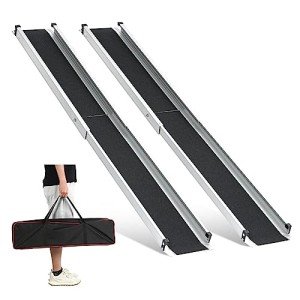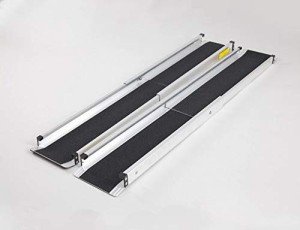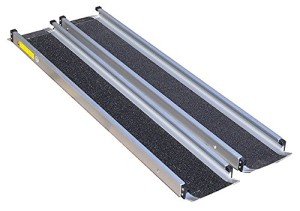The need for mobility solutions that cater to the varying requirements of individuals confronting physical challenges is more vital than ever. Among the most essential tools in enhancing accessibility are adjustable telescopic wheelchair ramps. These ramps offer versatile options for navigating the built environment, allowing wheelchair users and caregivers to maneuver easily. In this article, we delve into the features, benefits, and considerations of adjustable telescopic wheelchair ramps that extend from 6 feet to 12 feet.
Understanding Adjustable Telescopic Wheelchair Ramps
Adjustable telescopic wheelchair ramps are designed to accommodate different heights and scenarios, making them unique and effective solutions for accessibility. These ramps can extend or retract, providing users with the flexibility to transition between various locations like curbs, steps, and vehicle entry points. Unlike fixed-length ramps, which can limit usability, adjustable ramps offer a more personalized fit, promoting safety and convenience.
Key Features
-
Adjustable Length: The main feature of these ramps is their ability to adjust in length. This flexibility helps users adapt to surfaces of different heights and inclines.
-
Durable Materials: Most adjustable telescopic ramps are made from sturdy materials such as aluminum or steel, ensuring they can bear significant weight and withstand outdoor elements.
-
Portability: Many of these ramps are designed to be lightweight and collapsible, allowing for easy transport. This makes them an ideal option for individuals on the go.
-
Non-Slip Surface: Safety is paramount when it comes to ramps. Most adjustable models come equipped with non-slip surfaces or rails to prevent slips and falls.
-
Compatibility: These ramps are designed to be compatible with a variety of wheelchairs, power scooters, and other mobility aids, enhancing their utility.
Benefits of Adjustable Telescopic Wheelchair Ramps
The use of adjustable telescopic wheelchair ramps offers numerous advantages, which can significantly improve the quality of life for individuals with mobility challenges:
-
Enhanced Accessibility: These ramps make it far easier for individuals to access various locations, such as their homes, parks, or businesses, promoting independence.
-
Cost Efficiency: Investing in adjustable ramps can prove more cost-effective compared to constructing permanent ramps, particularly if versatility and portability are needed.
-
Flexibility: Users can adjust the ramp according to their specific needs. Whether one needs to navigate a single step or an entire staircase, a telescopic ramp can be tailored to fit the situation.
-
Safety Features: The non-slip surfaces and secure grips on adjustable ramps help reduce the risk of accidents, providing peace of mind for users and caregivers.
-
Ease of Use: These ramps are often easy to set up and dismantle, making them user-friendly, even for those who might not have the strength to manage heavy equipment.
Choosing the Right Adjustable Telescopic Wheelchair Ramp
When selecting an adjustable telescopic wheelchair ramp, several factors must be considered to ensure that it meets the specific requirements of the user:
-
Length Adjustment Range: Ramps can generally extend from 6 feet to 12 feet. Knowing the height of the area where the ramp will be installed will help determine the necessary length.
-
Weight Capacity: It's crucial to check the weight limit of the ramp to ensure it can safely support the user and their mobility device.
-
Angle of Incline: The incline should be manageable for the wheelchair user. Most experts recommend a 1:12 ratio, meaning for every inch of vertical rise, there should be at least 12 inches of ramp run.
-
Material Quality: Opt for ramps made from high-quality, resilient materials that can withstand frequent use and various weather conditions.
-
Portability Features: Check for features that enhance portability, such as weight, foldability, and the presence of carrying handles.
-
Safety Standards: Always look for ramps that comply with safety standards, ensuring reliable support.
FAQs About Adjustable Telescopic Wheelchair Ramps
Q1: How do I determine the length of ramp I need?
A1: Measure the height from the ground to the surface that you need to access. Divide that height by 12 to calculate the minimum ramp length needed for a gradual slope.
Q2: Can adjustable telescopic wheelchair ramps be used outdoors?
A2: Yes, most adjustable ramps are made from weather-resistant materials and designed for outdoor use. However, it’s essential to check the manufacturer's specifications for durability.
Q3: Are adjustable telescopic ramps heavy?
A3: Weight varies by model, but many adjustable ramps are designed to be lightweight for easy transport. Always check the specifications before purchasing.
Q4: How do I maintain my adjustable ramp?
A4: Regularly inspect the ramp for signs of wear or damage. Clean the surface to remove dirt or debris and store it in a dry place when not in use to prolong its life.
Q5: Can I use these ramps with electric scooters?
A5: Yes, adjustable telescopic ramps are typically compatible with various mobility devices, including electric scooters and wheelchairs. However, check the weight capacity to ensure safe use.
Adjustable telescopic wheelchair ramps serve as a vital resource in improving mobility for individuals with disabilities or those recovering from injuries. Their customizable lengths, safety features, and portability provide practical solutions for entering and exiting buildings and navigating outdoor spaces. When considering an adjustable ramp, one must evaluate specifics such as length requirements, weight capacity, and overall durability. By choosing the right ramp, users can gain the independence they deserve while ensuring their safety and comfort. As technology and designs continue to evolve, it's promising to see how adjustable ramps can further enhance accessibility in our communities.







